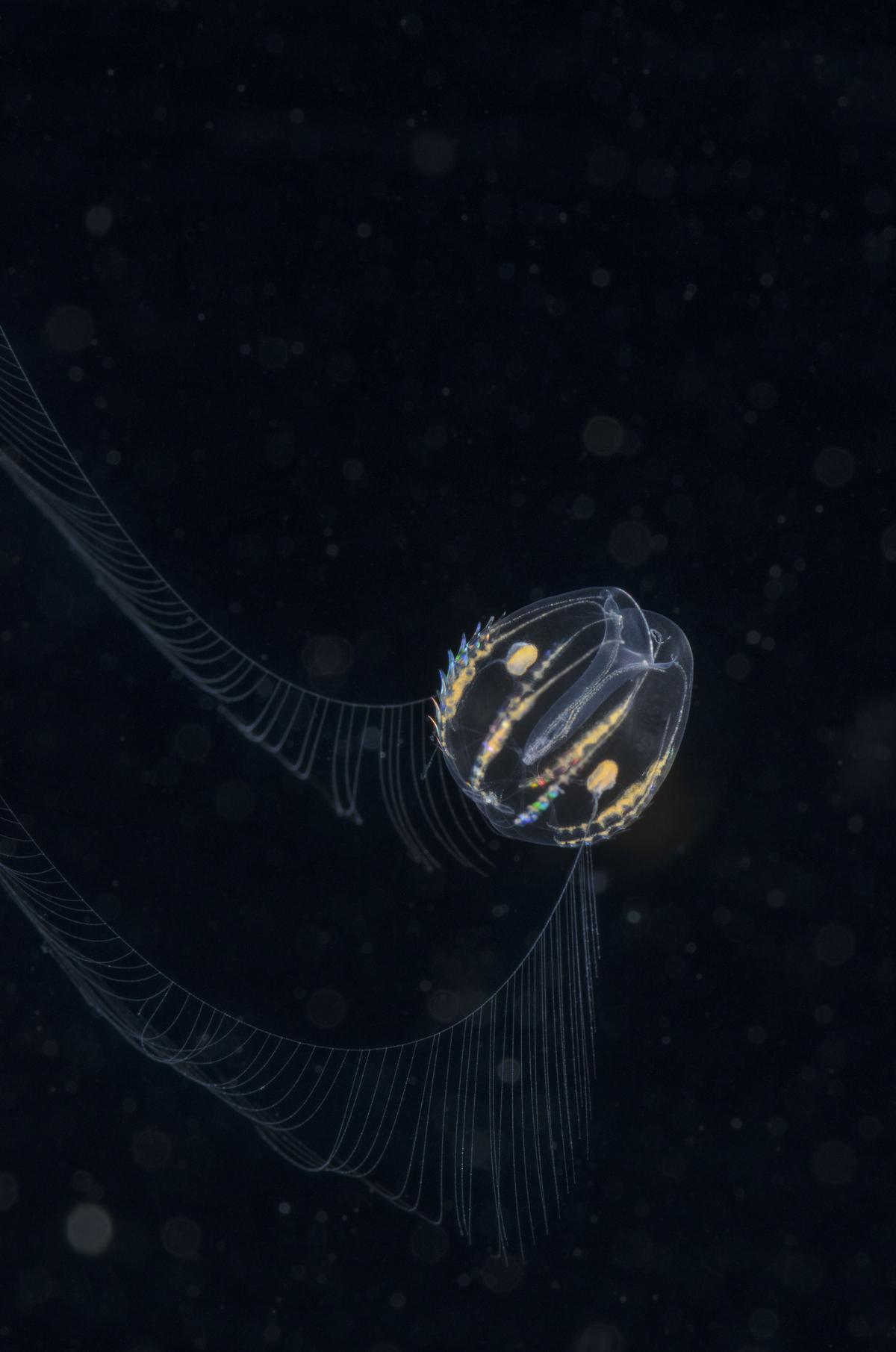Mysterious Nervous System of Comb Jellies | 23 May 2023
Why in News?
Comb jellies, or ctenophores, are ancient marine animals with unique features that have sparked scientific curiosity. Recent research has discovered a surprising aspect of the comb jelly's nervous system.

What are Comb Jellies?
- Comb jellies are marine animals that have fascinated scientists for decades due to their unique features and evolutionary history.
- They are among the earliest branching extant lineages of the animal kingdom and have a complex nervous system that differs from other animals.
- They are transparent, gelatinous animals that use long ciliary comb plates to propel their body through the water column.
- They range in size from a few millimetres to over a metre in length and have diverse shapes and colours. Some of them can produce bioluminescence, a phenomenon where living organisms emit light.
- They belong to the phylum Ctenophora, which contains about 200 species. They are found in all oceans and habitats, from polar to tropical regions, from shallow coastal waters to deep-sea trenches.
- They feed on plankton, small fish and other invertebrates, using sticky tentacles or oral lobes to capture their prey.
- Invertebrates are animals that do not possess a backbone or vertebral column.
- They feed on plankton, small fish and other invertebrates, using sticky tentacles or oral lobes to capture their prey.
How does the Comb Jelly Nervous System Work?
- Unlike most animals, comb jellies do not have a brain. Instead, they have a nerve net that consists of interconnected neurons distributed throughout their body.
- The nerve net controls various functions such as locomotion, feeding, sensory perception and bioluminescence.
- The neurons in the nerve net are not connected by synaptic junctions, as would be expected in the nervous system of any other animal.
- Instead, they are fused and share a continuous membrane, forming what scientists call a syncytium. This means that there are no gaps between nerve cells and that electrical signals can flow freely along the network.
- However, not all neurons in the comb jelly nervous system are fused. Some of them still connect with other nerve cells through synapses.
- This suggests that comb jellies use two different modes of communication between their nerve cells: a synaptic mode and a syncytial mode (i.e., without any synapses).
Note: Synapses are the places where neurons connect and communicate with each other. Each neuron has anywhere between a few to hundreds of thousands of synaptic connections, and these connections can be with itself, neighbouring neurons, or neurons in other regions of the brain.
- The discovery of syncytia in comb jellies has profound implications for understanding the evolution of nervous systems and neurons.
- It challenges the traditional view that synapses are essential for neural communication and that they evolved only once in the common ancestor of all animals.
